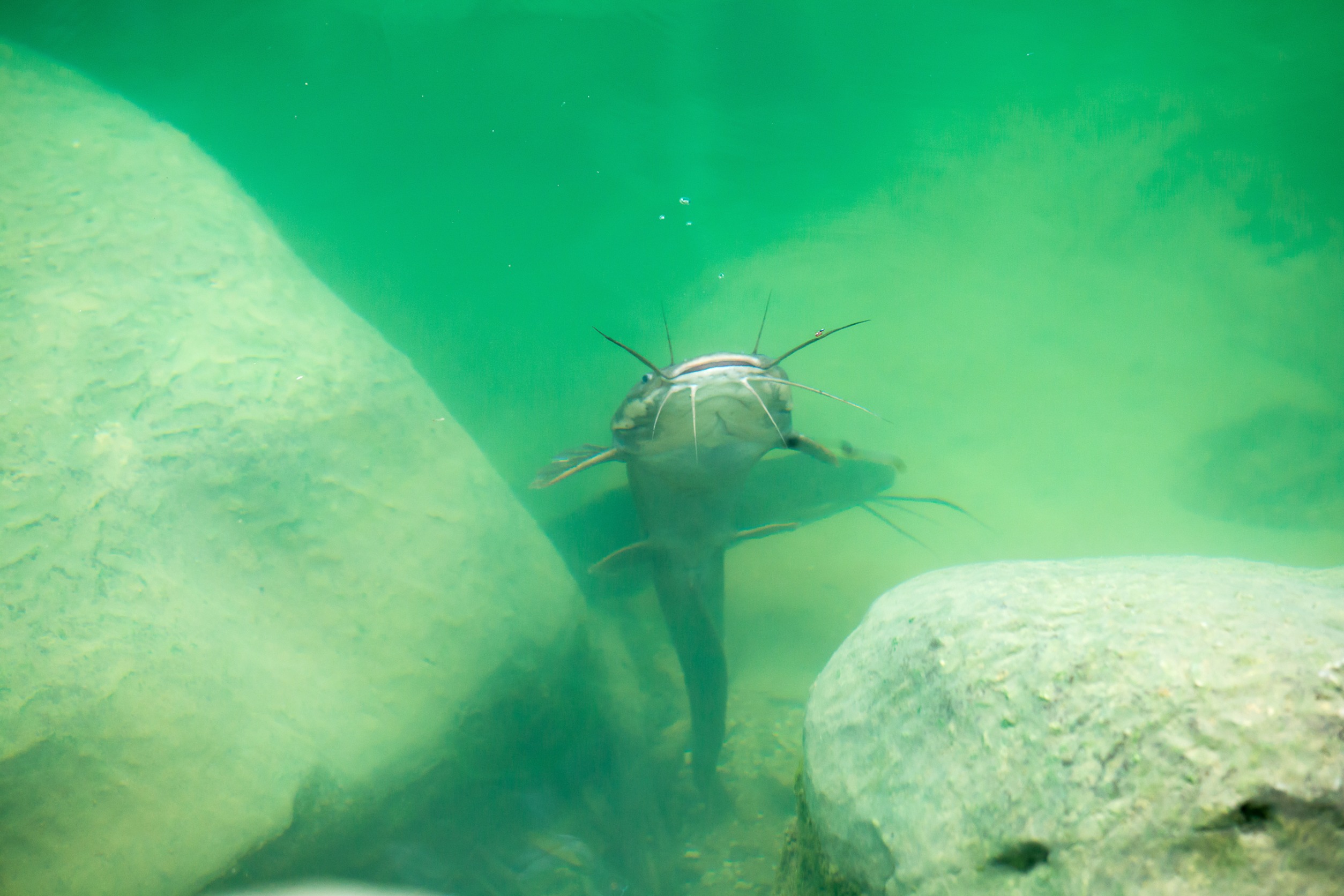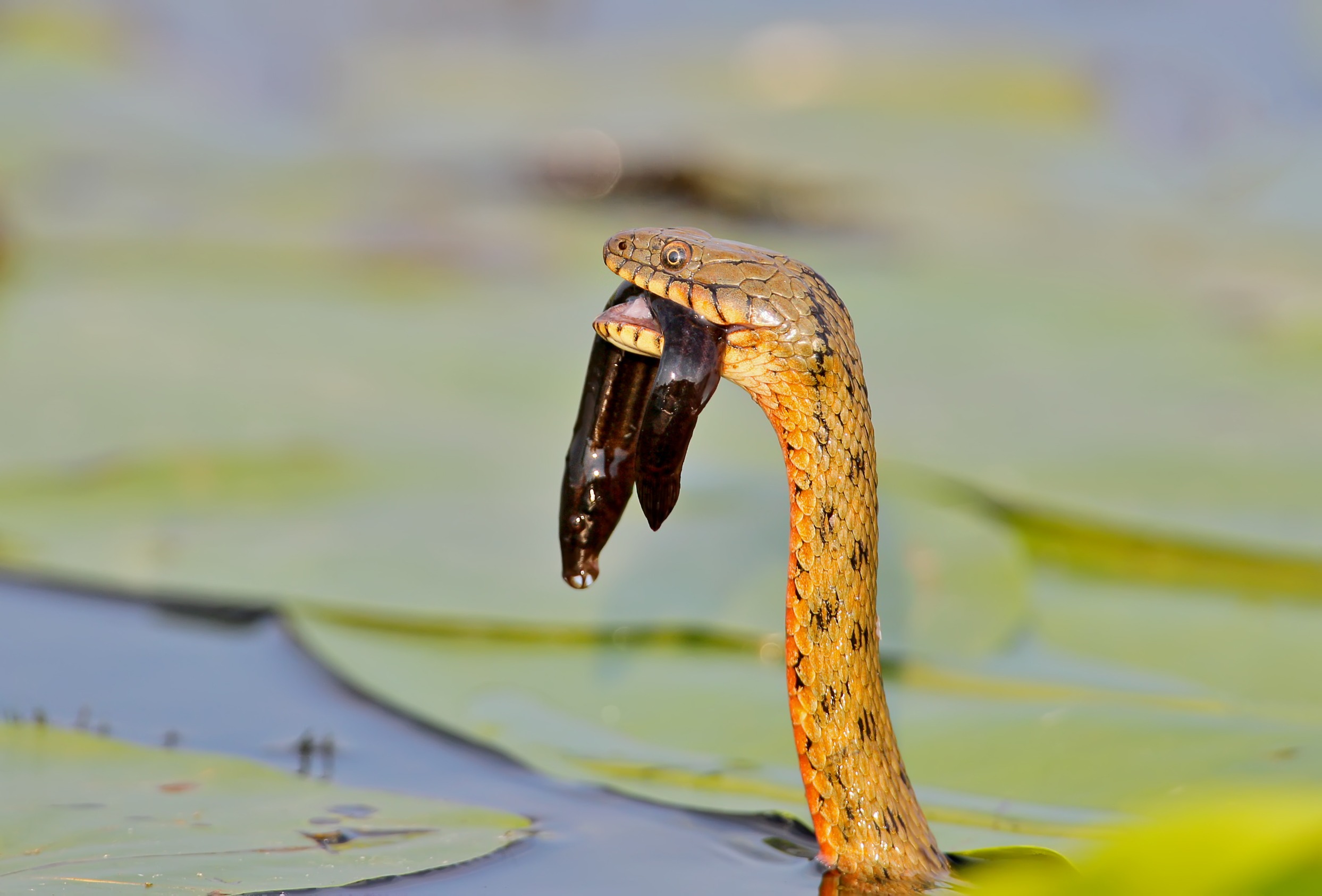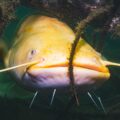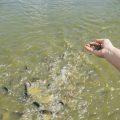Catfish can eat snakes, but not all of them. Snakes do not make up the typical catfish diet, which is rare. Of course, there are exceptions, which is why the answer is catfish do eat snakes if they get the chance. Catfish are known to eat anything they can find, and since many catfish live in shallower water, they also encounter snakes. There are also water snakes that the catfish can come into contact with. If you want to learn in detail about catfish eating snakes or if snakes eat catfish or not, this is the perfect article for you. We will also discuss other facts about catfish and snakes.
Catfish can eat snakes, but not any snakes. When a catfish eats a snake, it either happens in the sea, or the snake is semi-aquatic, so it does visit water where it gets eaten. Usually, there is a massive fight between a snake and a predatory fish, and if the fish wins, it eats the snake. Predatory fish such as Arowana, Piranha, and Pufferfish must be huge and powerful. These fish are strictly carnivorous, so they need protein, sometimes including the snakes that visit the water.

Where does the explanation for catfish eating the snake come into play?
Although catfish is not a predatory fish or even one with good hunting experience, the fish is an opportunistic feeder. Most catfish are omnivorous and eat whatever they can find in the water. When a predatory fish eats a snake, it cannot finish the whole snake since snakes are so big some of the snake’s parts sink to the bottom. This is when catfish come into the picture. The catfish is already a bottom-dwelling fish, and when it finds a snake at the bottom of the water, it eats the snake. The koi fish and the carp are also fish that will consume the leftover snake remains.
This is not the only time fish would eat a snake, though. Water snakes and catfish run into each other, and it is not peaceful when they do. The catfish and snake fight, and the snakes usually attack the dorsal fin, it is super sharp, so it instantly gives catfish the advantage. Regardless of who wins, if the catfish is large enough, it will attack the water snake and sometimes win. There has been an instance where a catfish was found, and its stomach contents showed a large water snake and its babies. Therefore, catfish eat snakes if they get the chance, but the opposite is just as valid because snakes eat catfish.
What is The Diet of Catfish?
Now we know that catfish can eat snakes in some cases, but that is not the primary diet of catfish. The catfish has a very varied diet, but the diet of catfish also depends on the species of catfish. There are hundreds of catfish species found all over the world except Antarctica.
Some catfish are herbivorous, and some are carnivorous, but most are omnivorous or opportunistic feeders. They eat whatever they can find in the water. Generally, you can find catfish eating aquatic plants like algae and seeds. They also feed on small fish, mollusks, frogs, snails, crustaceans, insects, and the larvae of those insects. The catfish also eats any leftover fish left by a predatory fish at the bottom of the ocean.
This fish is good at cleaning up the mess of other fish. Basically, catfish will eat whatever they can find and easily overpower. Catfish do not like to fight for their food unless it is needed. The fish usually stays hidden in caves and crevices until it finds the prey, and then it sneaks up to the target and swallows it whole.
What are the types of snakes will catfish eat?
There are main types of snakes around the world, but if a catfish eats a snake or even encounters one, it must be a semi-aquatic snake that can live inside water and travel in the water. Unlike snakes, catfish cannot leave the water, so they will only encounter each other in the water. When a catfish attacks a snake, it is because the attack is mutual, and the snake might eat the catfish instead. Here are some water snakes that the catfish can encounter.
Diamondback Water Snake
They are non-venomous and not aggressive, but they resemble the dangerous cottonmouth snake. These have a catfish diet, which is when they can encounter a catfish or other fish. Most of the time, the snake wins, but if the catfish is giant, it will have a higher chance of winning the fight with this fish. These water snakes are found in still water like ponds, lakes, and rivers. These snakes can get 5 feet long in size and are often brown-yellow.
Garter Snake
The garter snake is also known as the garden snake and is super common in North America. These fish are found near still water, like diamondback water snakes, in lakes, ponds, and rivers. The garter snake has venom, but the venom is harmless to humans and only affects the prey, which includes fish. Catfish and the garter snake can encounter each other, which is when the catfish can eat the snake. This smaller snake usually preys on smaller fish like guppies and minnows, so it will have a low chance of winning against a big catfish.
Brown Water Snake
Just like the diamondback water snake, the brown water snake prefers feeding on fish, especially catfish. It will look for catfish and hunt them. As you can tell, that is when the catfish can encounter them. Of course, another predator fish might have eaten the snake, and the catfish ate the leftovers left at the bottom of the water.
The brown water snake can grow up to 5 feet long and has a thick and heavy body that catfish cannot fight against. The snake is also a speedy swimmer that lives near still or slow-moving water. It can feed on many fish there.
The Cottonmouth Snake
The cottonmouth snake is also a snake that can swim in the water and is found in the water. The cottonmouth has a varied diet, including fish like catfish and other fish.
Fish, like catfish, do not have a fighting chance against cottonmouth because it has a potent venom that can kill the prey within seconds. Even humans can prey to their highly venomous bite. Since a cottonmouth can swim, it can come across a catfish, and the catfish might try defending itself and eat the snake itself. This is highly unlikely, though.
Banded Water Snake
Banded water snakes are peaceful snakes that eat fish, like small catfish, crayfish, frogs, toads, and tadpoles, among other things. It is a friendly snake found in Florida, Georgia, South Carolina, and North Carolina.
The banded snake also likes to live in rivers, cypress creeks, lakes, marshlands, and canals. This snake is short as it gets only around 3.5 feet long, so when a catfish encounters this snake, it has a winning chance. The snake is not aggressive, so it does not attack unless provoked.
Mississippi Green Water Snake
As the name suggests, this snake is found in Mississippi and is semi-aquatic. They feed on fish, amphibians, and rodents. Their fish-eating habits also include catfish. These snakes are not that long as they get around 4.5 feet, but the snake is strong-bodied and thick, making them a stronger predator than a catfish. A catfish usually has no chance against the green water snake.
Dice Snakes
These are one species of snakes that are found outside the United States, in Eurasia and Egypt, and they’re centered in Romania. The dice snake is semi-aquatic, but it does not stay only near the water’s surface. These snakes love searching crevices and other holes in the water for food.
The dice snake likes looking for fish in the water, and their diet primarily consists of fish. No matter how deep the water is, the dice snake has no problem looking for prey. There is one competitor for dice snakes, which is the grass snake. The grass snakes do not eat fish unless they see dice snakes eating fish, then they eat fish just so dice snake does not get all the fish.

Northern Water Snake
The northern water snakes are found in the eastern United States and can be seen in ponds, rivers, lakes, and swamps. This snake spends as much time in the water as it does outside, basking in the sun. The diet of the northern water snake consists of amphibians and fish, and they can eat catfish if it encounters one. But this snake does not spend too much time in the water and likes being outside, on trees, and enters water only when it needs or sees food.
What Fish Eat Snakes?
We have talked enough about snakes eating fish. Let us look at some fish that also eat snakes. We know that catfish can eat snakes, but it is uncommon. Some fish are bigger predators and better at eating snakes. Here we will mention such fish.
Gar Fish
Garfish is an interesting fish with a very long and narrow mouth. They live closer to the water’s surface and can get pretty big in size. There are many species of gar, and they are known to eat venomous and non-venomous snakes. The garfish eats whatever it can get its mouth on, that includes snakes.
Largemouth Bass
The largemouth bass is a carnivorous freshwater fish. Since it is a carnivorous fish, it feeds on other fish and organisms in the water. That also includes the snakes that visit the water, often venomous snakes. The snake and the largemouth often get into a fight, and the fish usually wins since it is a solid predatory fish.
Billfish
Billfish is a saltwater predatory fish with very pointed bills that get significant. This toothy pelagic species occasionally feeds on sea snakes if it encounters one. Although sea snakes are rather venomous, it does not stop the billfish.
Salmon
Salmon is another fish that can eat snakes if given the opportunity to. Many species of salmon can eat snakes, but this is an infrequent occasion considering salmon usually live in colder environments. In those environments, it is rare to encounter a sea snake.
Tiger Sharks
Tiger sharks are not selective when it comes to their prey, but they are carnivorous and a powerful predator. These feed on not only crabs, shellfish, lobsters, squid, bony fish, small sharks, skates, rays, porpoises, and turtles but also marine birds and mammals. So it is no surprise that sea snakes also make up their diet. Tiger sharks can eat snakes when encountering them, and sea snakes are no match for tiger sharks.
Conclusion
Now you know if catfish will eat snakes or not. The catfish will not willingly go out and seek a snake to eat, but if it gets the opportunity to, it will eat one that is dead on the bottom of the water. Whether that opportunity is in the form of leftover snake remains or the snake attacking the fish. Not only that, but you also know about some fish and snakes that eat each other. Many fish feed on snakes, and many snakes attack fish.











